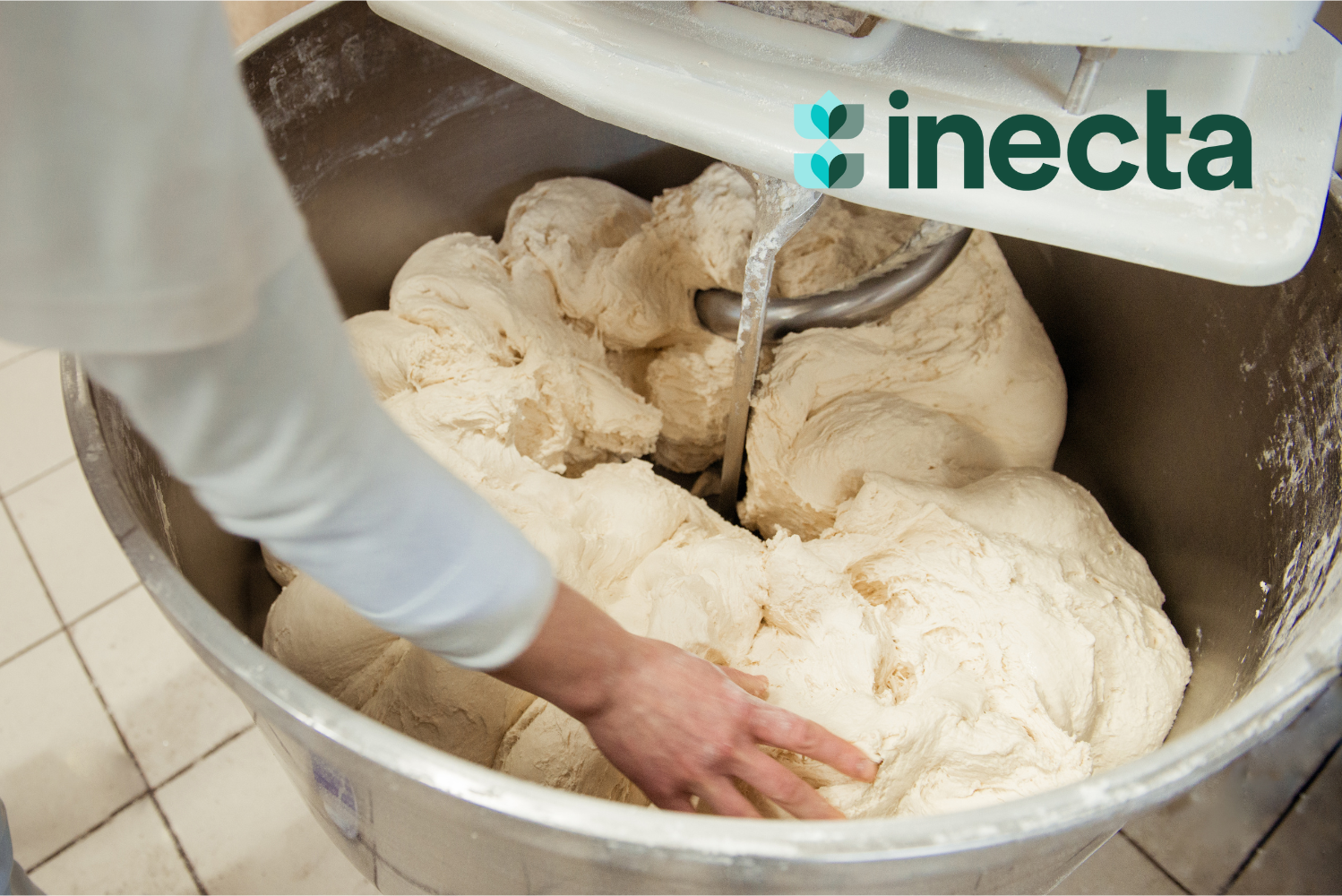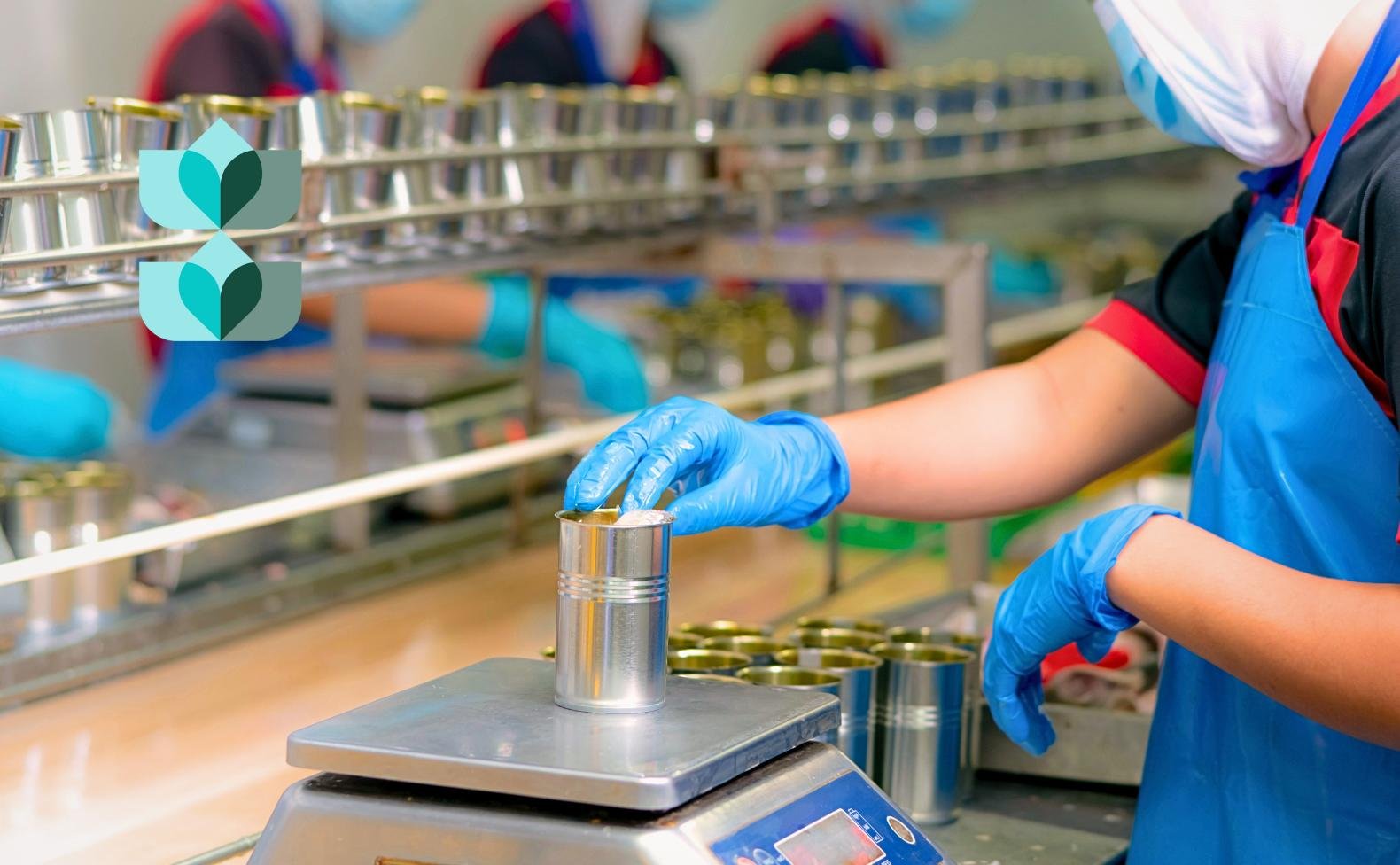Food Manufacturing companies leverage real-time data to make hard and fast decisions on a daily basis. But what is real-time data, and how exactly does it affect food manufacturing? What systems are in place to properly utilize real-time data within the food manufacturing sector? We'll explore this in more in this brief article.

Real-Time Data: What's The Big Deal?
Real-time data is important for businesses for several reasons:
Timely Decision-Making:
Real-time data provides up-to-the-minute information on various aspects of a business, allowing decision-makers to make informed and timely decisions. This is particularly crucial in fast-paced industries where market conditions, customer preferences, and operational dynamics can change rapidly. Real-time data enables businesses to respond quickly to emerging opportunities, address issues promptly, and stay ahead of the competition.
Improved Operational Efficiency:
Real-time data helps businesses monitor and optimize their operations in real time. By analyzing data on key performance indicators (KPIs) and operational metrics, businesses can identify bottlenecks, inefficiencies, and deviations from desired targets. This enables them to take immediate corrective actions, streamline processes, and improve overall efficiency.
Enhanced Customer Experience:
Real-time data allows businesses to understand their customers better and deliver personalized experiences. By analyzing real-time data on customer behavior, preferences, and feedback, businesses can tailor their products, services, and marketing efforts to meet individual customer needs. Real-time data also enables businesses to respond promptly to customer inquiries, resolve issues quickly, and provide real-time support, leading to improved customer satisfaction.
Agility and Adaptability:
Real-time data enables businesses to be agile and adaptable in a rapidly changing business landscape. By monitoring real-time market trends, competitor activities, and customer sentiment, businesses can quickly adjust their strategies, product offerings, and marketing campaigns to align with the evolving market dynamics. This agility allows businesses to seize opportunities, mitigate risks, and stay relevant in a competitive environment.
Early Detection of Issues:
Real-time data analytics facilitates the early detection of issues, anomalies, and potential risks. By monitoring real-time data from various sources, such as sensors, monitoring devices, and customer feedback channels, businesses can proactively identify and address issues before they escalate. This helps in minimizing disruptions, preventing costly errors, and ensuring smooth operations.
Predictive and Prescriptive Analytics:
Real-time data serves as the foundation for predictive and prescriptive analytics, enabling businesses to forecast future trends, outcomes, and customer behavior. By analyzing real-time data and applying advanced analytics techniques, businesses can make data-driven predictions and recommendations, enabling proactive decision-making and proactive actions to drive positive outcomes.
Operational Visibility:
Real-time data provides businesses with a comprehensive view of their operations at any given moment. It allows businesses to monitor key metrics, performance indicators, and operational processes in real-time. This visibility helps businesses identify areas of improvement, monitor progress toward goals, and make data-backed adjustments to optimize operations.
Real-time data is crucial for businesses as it enables timely decision-making, improves operational efficiency, enhances the customer experience, promotes agility and adaptability, facilitates early issue detection, supports predictive and prescriptive analytics, and provides operational visibility. By leveraging real-time data, businesses can gain a competitive edge, drive growth, and respond effectively to the dynamic business environment.

What Does Real-Time Data Mean for Food Manufacturing?
Real-time data analytics plays a crucial role in enhancing efficiency, productivity, and decision-making in various industries, including food manufacturing. By leveraging real-time data analytics in food manufacturing software, companies can gain valuable insights, optimize processes, ensure food safety, and drive continuous improvement. Here are some key areas where real-time data analytics can be leveraged in food manufacturing software:
Supply Chain Management:
Real-time data analytics enables monitoring and optimization of the entire supply chain, from raw material procurement to finished goods delivery. It provides visibility into inventory levels, supplier performance, demand patterns, and production schedules, allowing companies to make informed decisions regarding procurement, production planning, and logistics.
Quality Control and Food Safety:
Real-time data analytics can be used to monitor and analyze data from various sensors, monitoring devices, and quality control checkpoints throughout the production process. This enables early detection of quality issues, deviations from specifications, and potential food safety risks. By analyzing data in real-time, manufacturers can take immediate corrective actions, reduce waste, and ensure compliance with food safety regulations.
Equipment Performance Monitoring:
Real-time data analytics can be used to monitor the performance of equipment and machinery on the production floor. By collecting and analyzing data from sensors and IoT devices, manufacturers can detect anomalies, predict equipment failures, and schedule maintenance proactively. This helps in minimizing downtime, optimizes equipment utilization, and reduces maintenance costs.
Energy Management:
Real-time data analytics can be employed to monitor and optimize energy consumption in food manufacturing facilities. By analyzing data from energy meters, production lines, and environmental sensors, companies can identify energy inefficiencies, track energy usage patterns, and implement energy-saving measures. This not only reduces operational costs but also contributes to sustainability goals.
Production Optimization:
Real-time data analytics allows manufacturers to monitor key performance indicators (KPIs) related to production efficiency, yield, and throughput. By analyzing real-time data on factors such as machine speeds, production rates, and downtime, companies can identify bottlenecks, optimize production processes, and improve overall efficiency.
Demand Forecasting and Planning:
Real-time data analytics can help food manufacturers accurately forecast demand and plan production accordingly. By analyzing data from sales, customer behavior, and market trends, companies can make data-driven decisions regarding production volumes, inventory levels, and product assortment. This improves customer satisfaction, reduces stockouts, and minimizes excess inventory.
Real-Time Reporting and Visualization:
Real-time data analytics enables the generation of dynamic reports, dashboards, and visualizations that provide real-time insights into production performance, quality metrics, and other key parameters. This empowers decision-makers at all levels to monitor operations, identify trends, and take timely actions.
Overall, utilizing real-time data analytics in food manufacturing software offers significant benefits in terms of operational efficiency, quality control, cost reduction, and regulatory compliance. By utilizing real-time insights, food manufacturers can enhance their competitiveness, meet customer expectations, and drive continuous improvement in their operations.

What Is the Potential Downside of Not Leveraging Real-Time Data Analytics?
The downside of not leveraging real-time data analytics in food manufacturing can have several implications:
Lack of Real-Time Visibility:
Without real-time data analytics, companies may have limited visibility into their operations, making it difficult to monitor critical processes, identify bottlenecks, and detect issues promptly. This can result in delays, quality problems, and inefficiencies that impact production, customer satisfaction, and overall performance.
Inefficient Decision-Making:
Without real-time insights, decision-makers may rely on outdated or incomplete information, leading to suboptimal decisions. Timely access to accurate data is essential for making informed decisions regarding production planning, inventory management, quality control, and resource allocation. Without real-time analytics, companies may miss opportunities or make decisions based on inaccurate or incomplete information.
Inefficient Resource Allocation:
Real-time data analytics helps optimize resource allocation by providing insights into production line performance, equipment utilization, and inventory levels. Without this information, companies may struggle to allocate resources effectively, resulting in underutilized or overburdened assets, excess inventory, and increased costs.
Inadequate Quality Control:
Real-time data analytics enables continuous monitoring of quality metrics and early detection of deviations from specifications. Without this capability, companies may face difficulties in maintaining consistent product quality, leading to customer complaints, recalls, and damage to brand reputation.

Missed Opportunities for Continuous Improvement:
Real-time data analysis provides valuable insights for continuous improvement initiatives. Without this capability, companies may miss opportunities to identify and implement process optimizations, cost-saving measures, and quality enhancements. This can hinder their ability to stay competitive and adapt to changing market dynamics.
The absence of real-time data analytics in food manufacturing can result in limited visibility, inefficient decision-making, reactive problem-solving, suboptimal resource allocation, challenges in meeting customer demands, compromised quality control, and missed opportunities for continuous improvement. Embracing real-time data analytics is crucial for staying competitive, improving operational efficiency, and ensuring long-term success in the food manufacturing industry.











Free Valuable Resource!
3 simple steps to find your Food ERP
Free Valuable Resource!
3 simple steps to find your Food ERP
*We will never sell your information. Keeping your data and privacy secure is our highest concern.